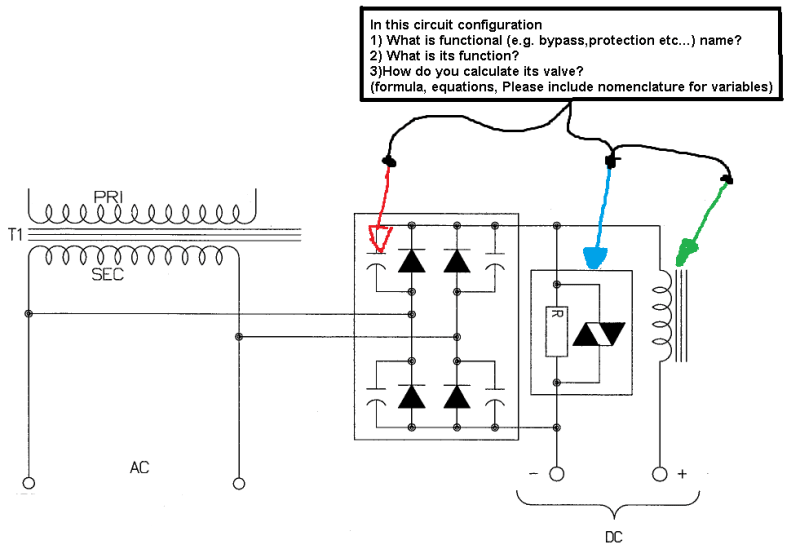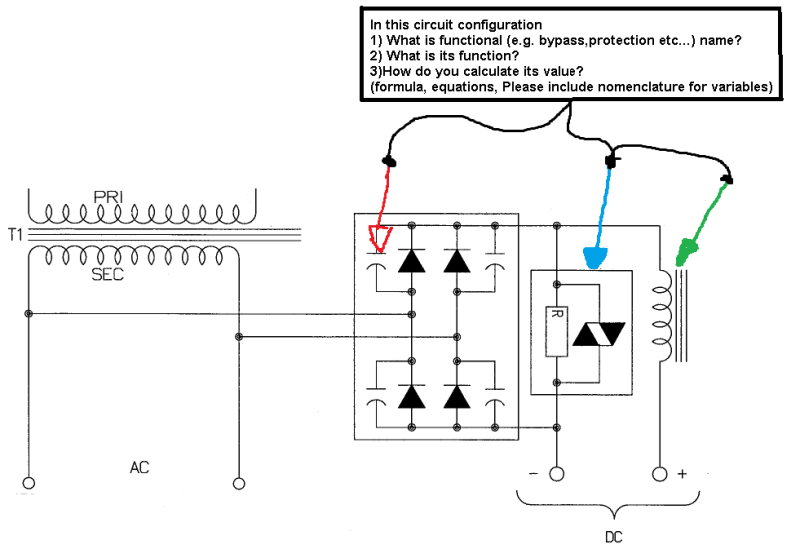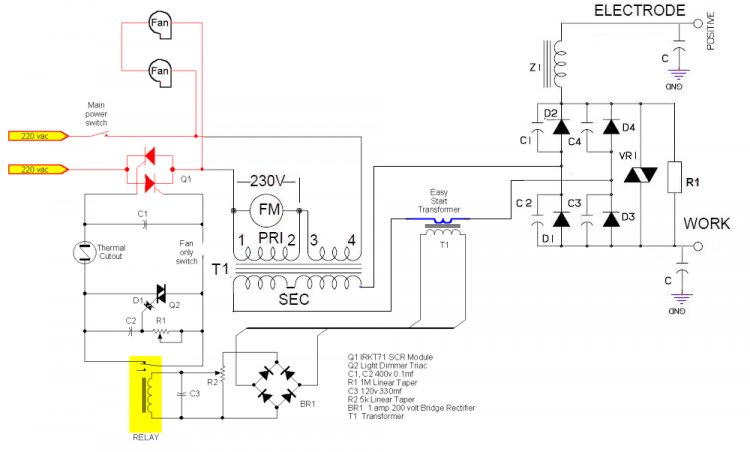Hello,
I need a little help. In reference to the circuit in the image below.
Secondary is 100V, 200A.
1). The capacitor in parallel with the diode in the bridge rectifier.
a). What is its functional name, how do I look it up on the web?
b). What is its purpose?
c). How do I calculate its value/specs?
2). The diac in parallel with the resistor in parallel with the bridge rectifier.
a). What is its functional name, how do I look it up on the web?
b). What is its purpose?
c). How do I calculate its value/specs?
3). The reactor (inductor) in series with the pos(+) output.
a). What is its functional name, how do I look it up on the web?
b). Its purpose is to limit inrush current and maybe filter/smooth ripples?
c). How do I calculate its value/specs?
Thanks for the assist.

I need a little help. In reference to the circuit in the image below.
Secondary is 100V, 200A.
1). The capacitor in parallel with the diode in the bridge rectifier.
a). What is its functional name, how do I look it up on the web?
b). What is its purpose?
c). How do I calculate its value/specs?
2). The diac in parallel with the resistor in parallel with the bridge rectifier.
a). What is its functional name, how do I look it up on the web?
b). What is its purpose?
c). How do I calculate its value/specs?
3). The reactor (inductor) in series with the pos(+) output.
a). What is its functional name, how do I look it up on the web?
b). Its purpose is to limit inrush current and maybe filter/smooth ripples?
c). How do I calculate its value/specs?
Thanks for the assist.




